
Burton Stephen Lancaster was an American actor and producer. Initially known for playing tough guys with a tender heart, he went on to achieve success with more complex and challenging roles over a 45-year career in films and television series. He was a four-time nominee for the Academy Award for Best Actor, and he also won two BAFTA Awards and one Golden Globe Award for Best Lead Actor. The American Film Institute ranks Lancaster as #19 of the greatest male stars of classic Hollywood cinema.

Stanton Macdonald-Wright, was a modern American artist. He was a co-founder of Synchromism, an early abstract, color-based mode of painting, which was the first American avant-garde art movement to receive international attention.

Thomas Hart Benton was an American painter, muralist, and printmaker. Along with Grant Wood and John Steuart Curry, he was at the forefront of the Regionalist art movement. The fluid, sculpted figures in his paintings showed everyday people in scenes of life in the United States.

The Museum of Contemporary Art, Los Angeles (MOCA) is a contemporary art museum with two locations in greater Los Angeles, California. The main branch is located on Grand Avenue in Downtown Los Angeles, near the Walt Disney Concert Hall. MOCA's original space, initially intended as a temporary exhibit space while the main facility was built, is now known as the Geffen Contemporary, in the Little Tokyo district of downtown Los Angeles. Between 2000 and 2019, it operated a satellite facility at the Pacific Design Center facility in West Hollywood.

Edward Joseph Ruscha IV is an American artist associated with the pop art movement. He has worked in the media of painting, printmaking, drawing, photography, and film. He is also noted for creating several artist's books. Ruscha lives and works in Culver City, California.
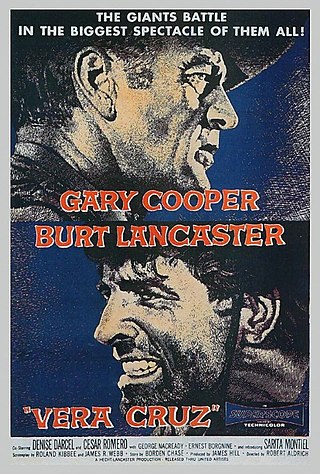
Vera Cruz is a 1954 American Western film directed by Robert Aldrich and starring Gary Cooper and Burt Lancaster, featuring Denise Darcel, Sara Montiel, Cesar Romero, Ernest Borgnine, Charles Bronson and Jack Elam. Set during the Franco-Mexican War, the film centers on a group of American mercenaries tasked with transporting a large shipment of Imperial gold to the port of Veracruz, but begin to have second thoughts about their allegiances. It was produced by Hecht-Lancaster Productions and released by United Artists on 25 December 1954.

The Corcoran School of the Arts and Design is the professional art school of the George Washington University, in Washington, D.C. Founded in 1878, the school is housed in the Corcoran Gallery of Art, the oldest private cultural institution in Washington, located on The Ellipse, facing the White House. The Corcoran School is part of GW's Columbian College of Arts and Sciences and was formerly an independent college, until 2014.
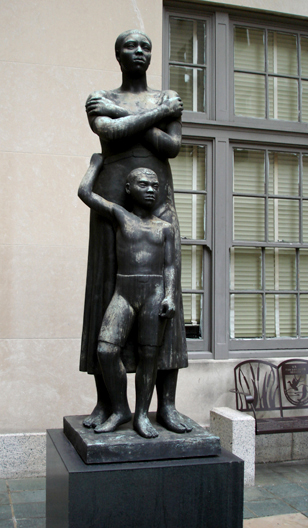
The Public Works of Art Project (PWAP) was a New Deal work-relief program that employed professional artists to create sculptures, paintings, crafts and design for public buildings and parks during the Great Depression in the United States. The program operated from December 8, 1933, to May 20, 1934, administered by Edward Bruce under the United States Treasury Department, with funding from the Federal Emergency Relief Administration.

The Kentuckian is a 1955 American CinemaScope Western film directed by Burt Lancaster, who also starred. This was one of only two films Lancaster directed, and the only one for which he has sole credit. It was Walter Matthau's film debut. The film is an adaptation of the novel The Gabriel Horn by Felix Holt. The film was shot in locations around Kentucky, including Cumberland Falls, the Levi Jackson Wilderness Road State Park near London, Owensboro, and Green River, and at the Abraham Lincoln Memorial Village near Rockport, Indiana. A feature landmark is the natural arch Sky Bridge.

Eugene Francis Savage was an American painter and sculptor known for his murals in the manner made official under the Works Projects Administration. He also is known for his work on the Bailey Fountain in Grand Army Plaza, Brooklyn, New York, the mural Videbimus Lumen in the Butler Library of Columbia University, and the Alma Mater mural featured in the Sterling Memorial Library on the campus of Yale University.

Marguerite Munger Peet (1903–1995) was an American painter. She did not have a far-reaching artistic reputation during her lifetime as she did not often exhibit her work in public. Her family found over 430 of her paintings after her death, and she has been the subject of three major retrospectives in the last 15 years. Her most significant work was created under the tutelage of famed American Regionalist painter Thomas Hart Benton.
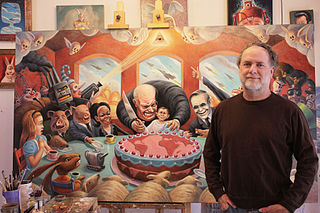
Mark Bryan is an American painter. Bryan's work travels in two distinct directions. Satirical works of social, political and religious comment and works which take an inward track to the imagination and subconscious. Humor and parody play a large role in many of his paintings. Style elements and influences in his work include classical painting, illustration, Romanticism, Surrealism and Pop Surrealism.

The Broad is a contemporary art museum on Grand Avenue in Downtown Los Angeles. The museum is named for philanthropists Eli and Edythe Broad, who financed the $140 million building that houses the Broad art collections. It offers free general admission to its permanent collection galleries. However, not all of its events are free and admission prices may vary by exhibit and/or by event. It opened on September 20, 2015.
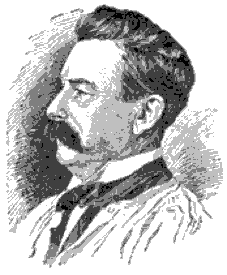
Eli Harvey was an American sculptor, painter and animalier.
Sonia Amalia Romero is an American artist, she is known for her printmaking, mixed media linocut prints, murals, and public art based in Los Angeles. She is known for depicting Los Angeles, Latin American imagery, and Chicano themes in her work.

America Today is a mural comprising ten canvas panels, painted with egg tempera in 1930–1931 by the American painter Thomas Hart Benton. It provides a panorama of American life throughout the 1920s, based on Benton's extensive travels in the country. Originally commissioned for The New School for Social Research, it has belonged to the Metropolitan Museum of Art, in New York, since 2012.
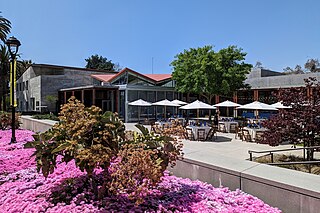
The Benton Museum of Art at Pomona College, known colloquially as the Benton, is an art museum at Pomona College in Claremont, California. It was completed in 2020, replacing the Montgomery Art Gallery, which had been home to the Pomona College Museum of Art (PCMA) since 1958. It houses a collection of approximately 18,000 items, including Italian Renaissance panel paintings, indigenous American art and artifacts, and American and European prints, drawings, and photographs. The museum is free to the public.

James Duard Marshall was a painter, lithographer, museum director, and art conservator who lived most of his life in Kansas City. Duard [pronounced "doo-erd"] was a student of Thomas Hart Benton and is best known for his 30-foot mural created for the centennial of Neosho, Missouri in 1939. The civic leaders of Neosho had approached Benton to produce the mural, as Benton had been born in Neosho, but he suggested that his student Marshall do the job. That mural hangs in the Neosho Newton County Library.

Jack Edward Barber was an American artist working in oil, egg tempera, acrylics, watercolor, lithography, and sculpture.

Ruth Pastine is an American artist known for abstract minimalist paintings that explore the phenomenological experience of color, light and space. Critics relate her art to the Southern California Light and Space movement, while identifying key differences, such as its focus on metaphysical aspects of consciousness and its reliance on basic, traditional means rather than synthetic-industrial materials. In these regards, writers trace her artistic lineage to Monet and Malevich—who sought to capture light's ineffability—and to Abstract Expressionist and Color field painters such as Barnett Newman, Ad Reinhardt and Mark Rothko, who probed the chromatic and tonal nuances of oil paint. Pastine's paintings typically consist of seamless gradating bands or fields of color built in layers with countless brushstrokes, which optically coalesce and appear to pulse, float, dissolve, or glow as if backlit. Peter Frank has written that she "paints as purely optical a kind of painting as it is possible to paint … nothing but color and its presentation, with myriad, closely shifted color modulations."



















